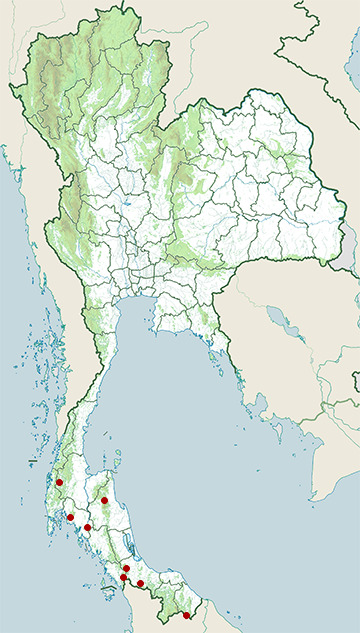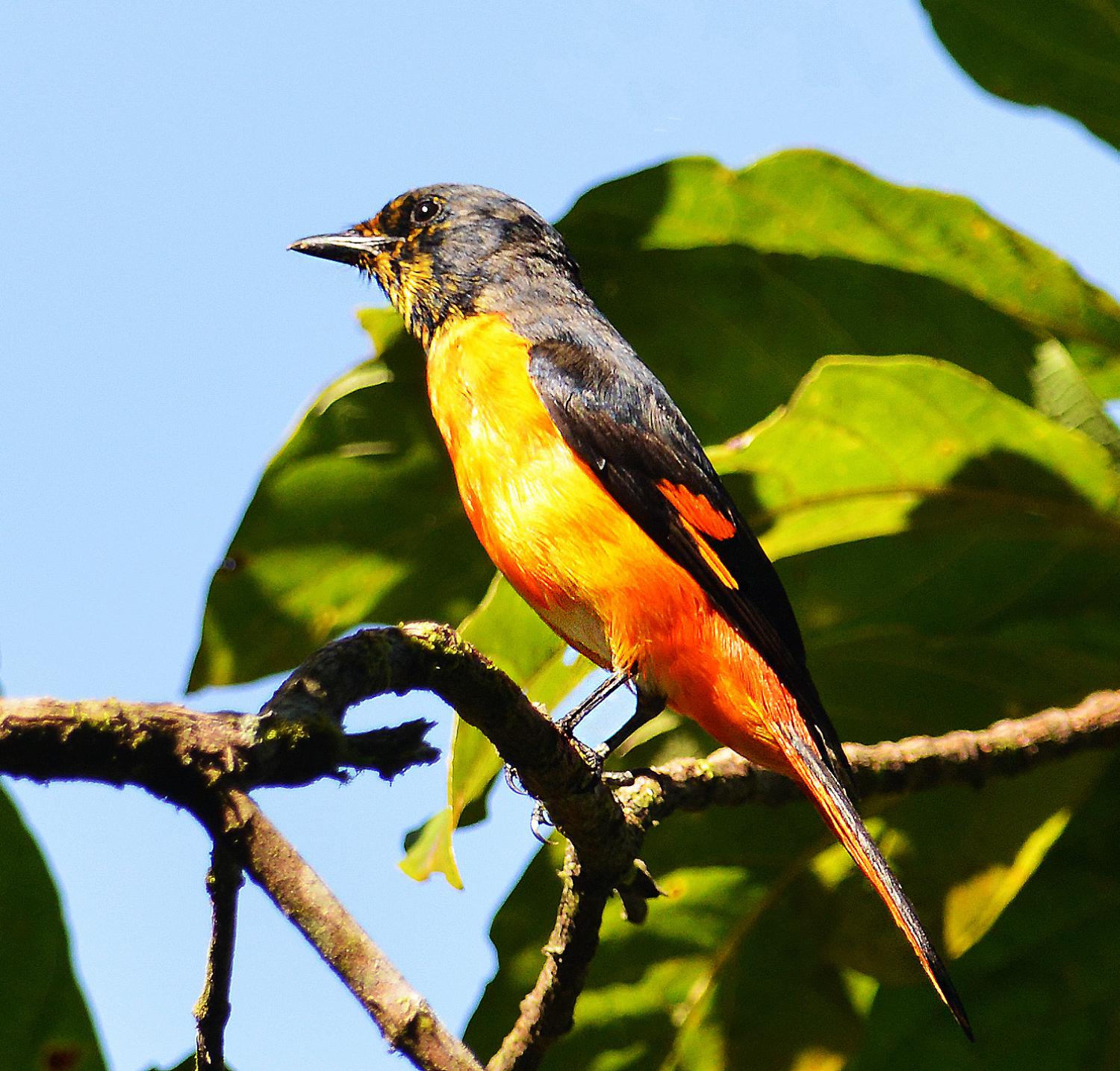Species of Thailand
Fiery minivet
Pericrocotus igneus
Edward Blyth, 1846
In Thai: นกพญาไฟเล็กคอดำ
The fiery minivet (Pericrocotus igneus) is a species of bird in the family Campephagidae. Its range includes Thailand, Malaysia, Indonesia and the Philippines. Its natural habitats are broadleaf, secondary and coastal forests. It is threatened by forest clearance and has been assessed as near-threatened by the International Union for Conservation of Nature (IUCN).
Taxonomy
This species was described from Malacca by Edward Blyth in 1846. The species name is from the Latin igneus "fiery". Harry C. Oberholser described the larger subspecies Pericrocotus igneus trophis from Simeulue in 1912. A 2010 molecular phylogenetic study confirmed the previously hypothesised relationship that the fiery minivet and small minivet (Pericrocotus cinnamomeus) are sister species.
Description
The fiery minivet is 15 - 16.5 cm long. It is sexually dimorphic. The male has a glossy black head and mantle and an orange-red back. The wings are mostly glossy black, with orange-red edges to the secondary coverts and an orange-red patch on the flight feathers. The gradated tail is black and orange-red. The chin and throat are glossy black, and the rest of the underparts is orange-red. The eyes are dark brown, and the beak and feet are black. The female has a grey head, with orange lores and eye-rims. The back is lead grey, and the rump is orange-red. The wings are darker grey, and the wing-patch is paler than the male's. The underparts are yellow. The juvenile bird has sooty brown upperparts and sooty black flight feathers. The underparts are off-white from the chin to upper belly, the rest being pale yellow. After a post-juvenile moult, it becomes similar to the adult female.
Distribution and habitat
This species is found in Tenasserim, the Thai-Malay Peninsula, Sumatra and its satellite islands, Borneo and Palawan. It is locally extinct in Singapore. It lives in the canopy of lowland broadleaf forest, forest edges, peat swamp forest, well-grown secondary forest, and coastal and mangrove forest. It is found up to 1200 m in elevation, mainly below 600 m. It sometimes visits wooded gardens near forests.
Behaviour
This minivet occurs in groups and also joins mixed-species foraging flocks. Its contact call is a swee-eet or twee-eet. It catches insects in the air and from leaves and branches. Breeding has been observed from May to July. The shallow cup nest is built on a fork of a tree from twigs and fibres and camouflaged with lichen and pieces of bark. The eggs are pale yellowish, with brown and grey marks. Moulting has been recorded from June to September.
Status
Deforestation due to logging and land conversion has likely caused the population to decline at a moderate speed. Forest fires are also a threat, such as in 1997 and 1998. The IUCN has assessed it as a near-threatened species.
This article uses material from Wikipedia released under the Creative Commons Attribution-Share-Alike Licence 3.0. Eventual photos shown in this page may or may not be from Wikipedia, please see the license details for photos in photo by-lines.
Category / Seasonal Status
BCST Category: Recorded in an apparently wild state within the last 50 years
BCST Seasonal status: Resident or presumed resident
Scientific classification
- Kingdom
- Animalia
- Phylum
- Chordata
- Class
- Aves
- Order
- Passeriformes
- Family
- Campephagidae
- Genus
- Pericrocotus
- Species
- Pericrocotus igneus
Common names
- Thai: นกพญาไฟเล็กคอดำ
Conservation status

Near Threatened (IUCN3.1)

Near Threatened (BirdLife)

Vulnerable (ONEP)

Vulnerable (BCST)
Photos
Please help us review the bird photos if wrong ones are used. We can be reached via our contact us page.
Range Map

- Hala-Bala Wildlife Sanctuary
- Khao Luang National Park
- Khao Nam Khang National Park
- Khao Phra - Bang Khram Wildlife Sanctuary
- Khao Sok National Park
- Mueang Krabi District, Krabi
- Thale Ban National Park
- Ton Nga-Chang Wildlife Sanctuary

